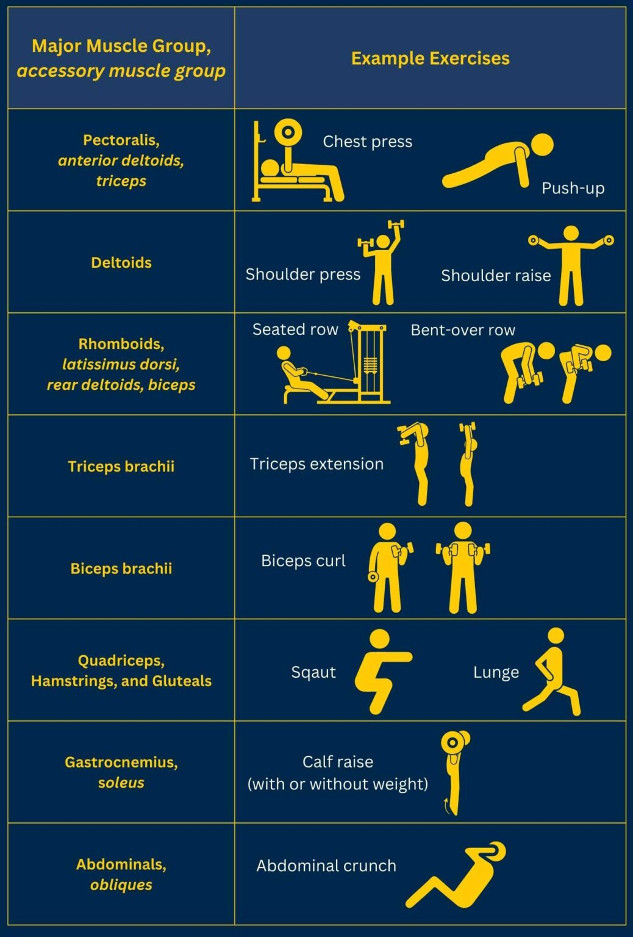
Hitting the gym to lift weights provides visible results - bigger biceps, firmer glutes, and more defined abs. However, scientists have confirmed that the benefits of resistance training extend way beyond just looking buff. A comprehensive report from the American Heart Association reveals that regular strength-based workouts reduce the risk of cardiovascular disease by improving more than just muscle mass.
The wide-ranging effects of pumping iron could help people of all ages and fitness levels, even those managing chronic health conditions. Understanding why resistance training packs a protective punch could motivate more folks to incorporate strength training into their weekly routines and take control of their heart health.
Muscle Moves for Heart Health
Many studies have tracked health outcomes in people who strength train compared to those who do not. Researchers have concluded that committing to even 30 to 60 minutes of resistance exercises per week could lower the risk of early death by up to 46%. Consistent strength training is also linked to a reduced chance of developing heart disease or having a stroke.
But how exactly do exercises like lifting weights or resistance bands improve markers of cardiovascular wellness like blood pressure, cholesterol, and insulin sensitivity? Part of it relates to changes in body composition - gaining muscle mass by working out while shedding fat pounds. This benefit of resistance traing helps control weight and prevents obesity.
Additionally, scientists think strength training impacts blood vessel function. The exertion of progressively overloading muscles prompts arteries and veins to expand and stiffen less. This may allow blood to flow freely throughout the body and to the complex working areas that need it.
 Infographic adapted from the 2023 American Heart Association Scientific Statement on resistance training
Infographic adapted from the 2023 American Heart Association Scientific Statement on resistance training
An Approach for All Ages
Children as young as six can safely perform appropriately tailored resistance exercise programs under supervision. But notably, senior citizens may have the most to gain from incorporating strength training into their golden years.
While aging tends to sap muscle mass and strength, seniors who resistance train can slow this decline. And the functional fitness benefits go beyond just looking toned. Increased leg power keeps older adults steadier on their feet, helping prevent falls and severe bone breaks requiring hospitalization. Weight training also helps counteract age-related frailty that could otherwise lead to disability.
For middle-aged adults at risk for cardiovascular disease, the American Heart Association encourages making resistance training part of routine health management. Strength gains can help control elevated blood pressure and blood sugar, especially for people with extra weight or diabetes.
Where to Start Strength Training
While free weights and weight machines at the gym offer versatile options for resistance training, they aren’t required to reap benefits. Lifting canned goods, stretching resistance bands, and performing calisthenics using one’s body weight also challenge muscles effectively. This makes resistance work convenient to incorporate at home for those short on time or with limited mobility.
The American Heart Association recommends 8 to 10 strength-building exercises involving major muscle groups, completed in 1 to 3 sets of 8 to 12 reps performed to fatigue. Shoot for at least 2 sessions per week, spacing days in between for muscular recovery. Over time, progressively increase resistance as workouts become less challenging.
Even after a single strength session, take it easier initially when recovering from injury or managing complex health conditions. Lighten resistance while keeping reps higher to prevent strain. And, of course, consult a healthcare provider about appropriate modifications given individual health.
By incorporating resistance into fitness regimens, people across all walks of life can shore up muscular and cardiovascular defenses for a stronger future. So take advantage of strength training’s broad health benefits beyond just looking buff. Empower yourself to pump up a resilient body at any age.
About the Author
 Robert Jennings is the co-publisher of InnerSelf.com, a platform dedicated to empowering individuals and fostering a more connected, equitable world. A veteran of the U.S. Marine Corps and the U.S. Army, Robert draws on his diverse life experiences, from working in real estate and construction to building InnerSelf with his wife, Marie T. Russell, to bring a practical, grounded perspective to life’s challenges. Founded in 1996, InnerSelf.com shares insights to help people make informed, meaningful choices for themselves and the planet. More than 30 years later, InnerSelf continues to inspire clarity and empowerment.
Robert Jennings is the co-publisher of InnerSelf.com, a platform dedicated to empowering individuals and fostering a more connected, equitable world. A veteran of the U.S. Marine Corps and the U.S. Army, Robert draws on his diverse life experiences, from working in real estate and construction to building InnerSelf with his wife, Marie T. Russell, to bring a practical, grounded perspective to life’s challenges. Founded in 1996, InnerSelf.com shares insights to help people make informed, meaningful choices for themselves and the planet. More than 30 years later, InnerSelf continues to inspire clarity and empowerment.
Creative Commons 4.0
This article is licensed under a Creative Commons Attribution-Share Alike 4.0 License. Attribute the author Robert Jennings, InnerSelf.com. Link back to the article This article originally appeared on InnerSelf.com
books_fitness



